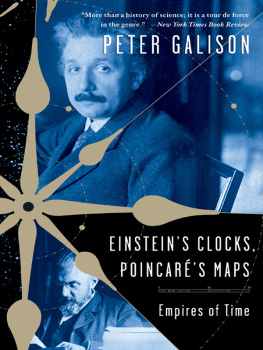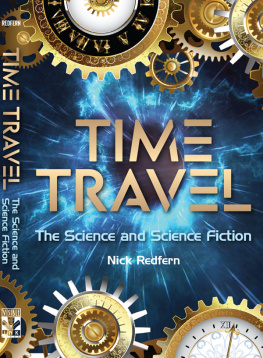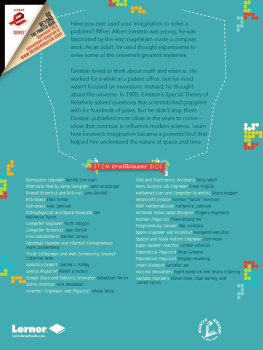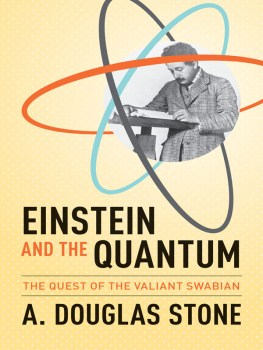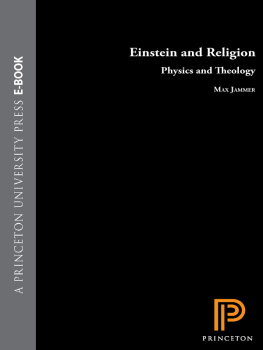
More praise for Einsteins Clocks, Poincars Maps
This is how twentieth-century science really begannot just in abstractions but in machines; not just in Einsteins brain but in coal mines and railway stations. Peter Galisons book is engaging, original, and absolutely brilliant.
James Gleick, author of Chaos
Part history, part science, part adventure, part biography, part meditation on the meaning of modernity, Dr. Galisons story takes readers from the patent office to lonely telegraphers sitting in the rain in the Andes, from the coal mines of France to town councils in New England as it circles around the exploits of Einstein and his rival.... In Dr. Galisons telling of science, the meters and wires and epoxy and solder come alive as characters, along with physicists, engineers, technicians and others in the armies of modern science.... Experts on relativity agree that Dr. Galison has unearthed fascinating material.
Dennis Overbye, New York Times
Peter Galison provides a masterful and exciting account of the revolution in our understanding of time that occurred at the beginning of the twentieth century. Galison places Einstein and Poincar at the crossroads of physics, philosophy, and technology where the problem of coordinating distant clocks played a crucial role in both the new physics and the new technology.
David Gross,
Director, Institute for Theoretical Physics,
University of California, Santa Barbara
In what amounts to a stroke of genius, Peter Galison employs his unmatched ability to depict historical events on many levels and from many vantage points, as well as his unique combination of historical, scientific, and philosophical sophistication, to shed fresh light on the revolution in physics that we associate with the word
Relativity. This is simultaneously an indispensable book for the specialist, and a wonderful read for anyone.
Hilary Putnam,
Cogan University Professor Emeritus, Harvard University
Peter Galison manages to break through the noise and find a fresh, idiosyncratic take on the great man: Einstein the clock-watcher.... What is extraordinary about Einsteins Clocks, Poincars Maps is the colorful way Galison recreates a forgotten world in which science and politics were transformed by the seemingly simple desire to know what time it is.
Corey S. Powell, Newsday
Peter Galison provides a unique and enlightening view on the origin of time as we know it in the modern age.... We very rarely see Galisons sort of multilayered historical account of the momentous changes that do occur.... Einsteins Clocks, Poincars Maps is a treat... packed with an abundance of challenging philosophical thoughts and delightful historical connections, which are worth pondering at length. Scientists, historians and philosophers of science, and many nonspecialists will all find this book enlightening and enjoyable.
Hasok Chang, American Scientist
With ease and authority, Galison cuts through the many layers of physics, technology and philosophy. Brilliant.
Barbara Fisher, Boston Sunday Globe
An important addition to school and community library History of Science collections, Einsteins Clocks and Poincars Maps is an exciting, intriguing and enthusiastically recommended coverage.
Library Bookwatch
Galison offers a highly engaging and insightful account of the intersection of science, technology, and social need that grounded new developments to relativity theory, time keeping, and map making. This superb essay in the history of science reveals a story in which physics, engineering, philosophy, colonialism, and commerce collided. Highly recommended.
T. Eastman, Choice
A richly detailed account of the interplay of scientific and technical issues at the beginning of the modern era.
Kirkus Reviews
By giving a fresh view... Galisons enjoyable book stimulates us to reconsider the underlying questions of modern physics.
Peter Pesic, Times Literary Supplement
Galisons meticulously detailed reconstruction gives a satisfyingly complete account of the two mens differences. This is perhaps the most sophisticated history of science ever attempted in a popular science book. [A] wonderfully knowledgeable and thoughtful portrait of what really mattered in the forging of a key aspect of the modern world.
Jon Turney, The Guardian
[Galisons] insistence that the real world not only intruded into what historians and scientists have commonly thought of as a theoretical and abstract breakthrough in physics, but that the real world could have been essential for the breakthrough, is [his] great contribution. He convincingly contends that the growing insight into time coordination... was the result of a continuous interplay between abstract thought and concrete application [and] offers a new model for interpreting other events in this history of science.
Marc Rothenberg, Salem Press
[I]f you want to know something about what goes on at the highest levels of science... it is a terrific goad to mediation.
economicprincipals.com
ALSO BY PETER GALISON
How Experiments End
Image and Logic: A Material Culture of Microphysics
COEDITED VOLUMES:
Big Science: The Growth of Large-Scale Research
The Disunity of Science
Atmospheric Flight in the Twentieth Century
Science in Culture
Picturing Science, Producing Art
The Architecture of Science
Scientific Authorship: Credit and Intellectual Property in Science

Copyright 2003 Peter Galison
All rights reserved
Printed in the United States of America
First published as a Norton paperback 2004
For information about permission to reproduce selections from this book, write to Permissions, W. W. Norton & Company, Inc.
500 Fifth Avenue, New York, NY 10110
Manufacturing by The Haddon Craftsmen, Inc.
Book design by Chris Welch
Production manager: Anna Oler
Library of Congress Cataloging-in-Publication Data
Galison, Peter Louis.
Einsteins clocks and Poincars maps : empires of time / by Peter Galison.1st ed.
p. cm.
Includes bibliographical references and index.
ISBN 0-393-02001-0
1. Time. 2. Relativity (Physics) 3. Einstein, Albert, 18791955. 4. Poincar, Henri, 18541912. I. Title.
QB209 .G35 20032002155114
529dc21
ISBN 0-393-32604-7 pbk.
ISBN 978-0-393-24386-4 (e-book)
W. W. Norton & Company, Inc., 500 Fifth Avenue, New York, N.Y. 10110
www.wwnorton.com
W. W. Norton & Company Ltd.
Castle House, 75/76 Wells Street, London W1T 3QT
For Sam and Sarah,
who have taught me the right use of time
I have benefited enormously from discussions with many students and colleagues. It is a privilege to be able in particular to thank David Bloor, Graham Burnett, Jimena Canales, Debbie Coen, Olivier Darrigol, Lorraine Daston, Arnold Davidson, James Gleick, Michael Gordin, Daniel Goroff, Gerald Holton, Michael Janssen, Bruno Latour, Robert Proctor, Hilary Putnam, Juergen Renn, Simon Schaffer, Marga Vicedo, Scott Walter, and especially Caroline Jones, for their many thoughtful comments. Over the years it has been a pleasure to have learned as well from many discussions with Einstein scholars Martin Klein, Arthur Miller, and John Stachel. Though short in pages, the manuscript and picture preparation were long and certainly could not have been done without the help of research assistants Doug Campbell, Evi Chantz, Robert Macdougall, Susanne Pickert, Sam Lipoff, Katia Scifo, Hanna Shell, and Christine Zutz. Particular thanks go to my Norton editor, Angela von der Lippe, and my agent, Katinka Matson, for good ideas and much encouragement. Amy Johnson and Carol Rose offered many editorial improvements. Finally, I owe a great deal to the many archivists who graciously helped in my researchespecially at the Observatoire de Paris, the Archives Nationales, the Archives de la Ville de Paris, the New York Public Library, the U.S. National Archives, the National Archives of Canada, the Brgerbibliothek Bern, and the Stadtarchiv Bern.
Next page
